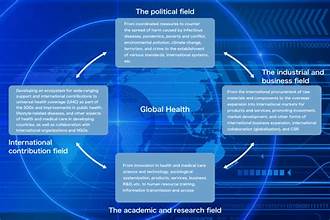
Introduction
As we advance into 2024, the public health landscape is evolving at a rapid pace. Innovations are reshaping how we approach health challenges, focusing on prevention, personalized care, and technology integration. This article explores the latest breakthroughs in public health initiatives for 2024, highlighting how these advancements are poised to transform our future.
1. AI-Driven Predictive Analytics
Artificial Intelligence (AI) continues to revolutionize public health by enabling predictive analytics that forecast disease outbreaks and health trends. AI algorithms analyze vast amounts of data from electronic health records, social media, and other sources to predict potential outbreaks and assess risk factors. For example, AI can now predict flu season severity with high accuracy, allowing for timely vaccination campaigns and resource allocation.
Key Benefits:
- Early Detection: AI models provide early warnings about emerging health threats.
- Resource Optimization: Health resources can be better allocated based on predictive data.
- Personalized Recommendations: Tailored health advice can be given based on individual risk factors.
2. Telehealth Expansion and Integration
Telehealth has seen remarkable growth, especially since the pandemic. In 2024, telehealth services have expanded beyond primary care to include specialties such as mental health, dermatology, and chronic disease management. Integration of telehealth with electronic health records (EHRs) has improved continuity of care and patient outcomes.
Key Benefits:
- Accessibility: Patients in remote or underserved areas gain access to healthcare services.
- Convenience: Reduces the need for travel and wait times.
- Continuity of Care: Ensures that specialists and primary care providers can collaborate seamlessly.
3. Wearable Health Technology
Wearable health technology has become increasingly sophisticated, offering real-time monitoring of various health metrics. Devices such as smartwatches and fitness trackers now provide detailed insights into heart rate, sleep patterns, and physical activity. In 2024, these devices are incorporating more advanced features like continuous glucose monitoring and early detection of irregular heart rhythms.
Key Benefits:
- Real-Time Monitoring: Continuous tracking of vital signs and health metrics.
- Early Detection: Identifies potential health issues before they become critical.
- Patient Engagement: Encourages proactive health management and lifestyle changes.
4. Personalized Medicine and Genomics
The field of genomics is making significant strides, leading to advancements in personalized medicine. Genetic testing and analysis are now more accessible, allowing for personalized treatment plans based on an individual’s genetic makeup. This approach enhances the effectiveness of treatments and reduces adverse reactions.
Key Benefits:
- Tailored Treatments: Medications and therapies are customized to individual genetic profiles.
- Preventive Care: Genetic information can help predict and prevent potential health issues.
- Enhanced Accuracy: Improves treatment outcomes and minimizes side effects.
5. Sustainable Public Health Practices
Sustainability has become a crucial aspect of public health initiatives. In 2024, there is a growing emphasis on eco-friendly practices, such as reducing waste in healthcare facilities, promoting green energy, and addressing climate change impacts on health. Sustainable practices aim to create healthier environments and improve overall public health.
Key Benefits:
- Environmental Impact: Reduces the carbon footprint of healthcare operations.
- Health Outcomes: Mitigates health issues related to pollution and climate change.
- Community Engagement: Encourages community involvement in sustainability efforts.
6. Enhanced Vaccination Strategies
Vaccination remains a cornerstone of public health. In 2024, new strategies and technologies are enhancing vaccine development and distribution. mRNA technology, which was pivotal in COVID-19 vaccines, is now being applied to other infectious diseases. Additionally, efforts are being made to improve vaccine accessibility and address vaccine hesitancy through targeted education and outreach programs.
Key Benefits:
- Rapid Development: Accelerates the creation of vaccines for emerging diseases.
- Wider Coverage: Ensures vaccines reach underserved populations.
- Informed Public: Increases vaccine uptake through education and awareness campaigns.
7. Mental Health Integration
Mental health has gained recognition as a critical component of overall health. In 2024, public health initiatives are increasingly integrating mental health services into primary care settings. This approach facilitates early intervention and comprehensive care for mental health conditions alongside physical health issues.
Key Benefits:
- Holistic Care: Addresses both mental and physical health in a unified approach.
- Early Intervention: Provides timely support for mental health issues.
- Reduced Stigma: Promotes mental health as a crucial aspect of overall wellness.
Conclusion
The breakthroughs in public health initiatives for 2024 reflect a transformative shift towards more personalized, technology-driven, and sustainable approaches to health care. From AI-powered predictive analytics to advancements in wearable technology and personalized medicine, these innovations are shaping a healthier future. Embracing these advancements will not only enhance individual health outcomes but also strengthen public health systems worldwide.

